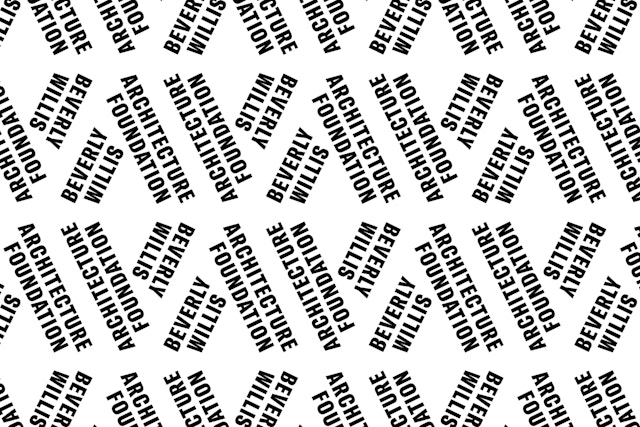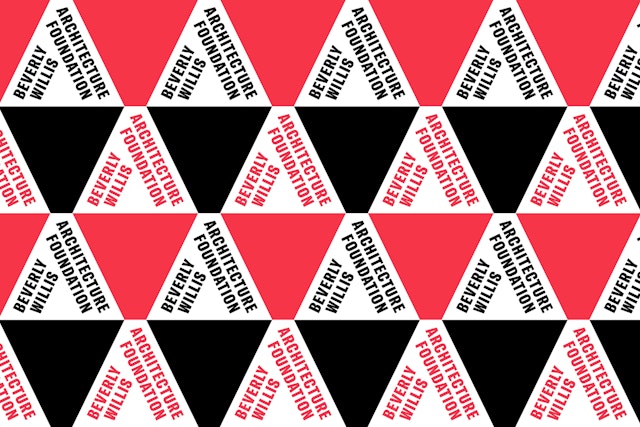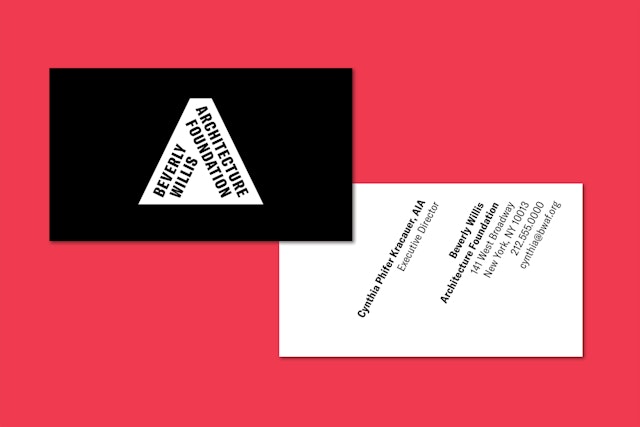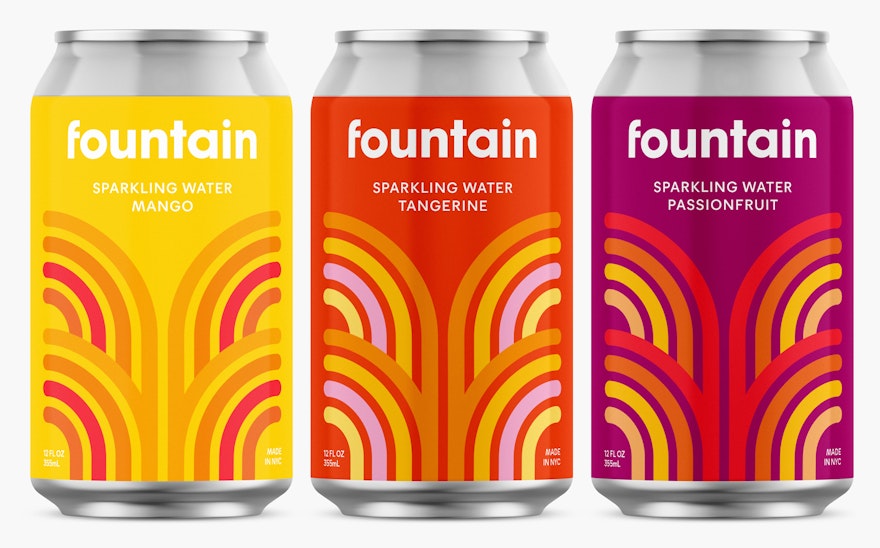
The shape of the logo suggests the form of an ‘A’ and a skyscraper as seen in perspective.




The Beverly Willis Architecture Foundation (BWAF) is an advocacy group committed to changing the culture of the building industry for women working in architecture, landscape, engineering and construction—market sectors where only about 17 percent of the leaders are women. Founded in 2002 by Willis, a pioneering woman in the field, the New York-based nonprofit advances the recognition of women’s contributions to architecture through grants and research and supports current professionals and students through educational and social initiatives.
Pentagram has designed a new identity for BWAF that helps the group raise its profile at a time when women are reasserting their power within the profession. The Pentagram team worked closely with BWAF Executive Director Cynthia Krakauer, AIA on the project. The Foundation wanted a strong, recognizable symbol that would stand out among the myriad of architecture organizations and function as a core identity alongside BWAF’s various programs.
The letter “A” is ubiquitous in architectural identities, along with symbols of buildings and columns. The BWAF identity centers on a shape that suggests the form of an “A” and a skyscraper as seen in perspective, without being too literal. The logo specifically takes its shape from one of the first high-rises designed by a woman, the 52-story 270 Park Avenue (also known as JPMorgan Chase Tower and formerly the Union Carbide Building), which was designed by Natalie de Blois with Gordon Bunshaft at Skidmore, Owings and Merrill and completed in 1960. (Sadly, it is currently being demolished to make way for another skyscraper.) The shape also evokes a pyramid, a mountain, and a road forward—all visual metaphors for the journeys women may take in the field.
Within the shape, the wordmark, set in the sans serif GT America, echoes the structure of the “A” and may also be used on its own. The triangular form of the logo can be arranged in patterns, and easily scales for a variety of applications, including icons for social media.
